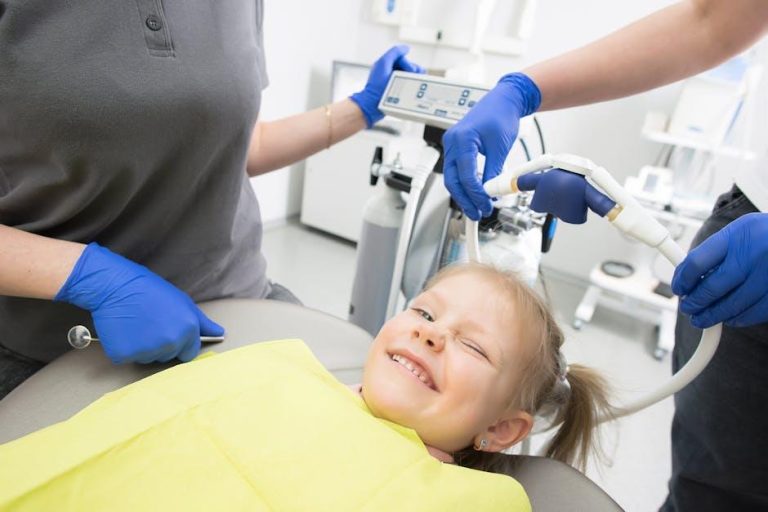1 in 3 Kids Has Dental Problems, Poll Finds – U.S. News & World Report
The oral health of children in the United States is raising concerns recently, as a revealing poll by U.S. News & World Report found that 1 in 3 kids has dental problems. This statistic shines a light on the growing prevalence of dental issues among young children—a problem with several contributing factors including diet, access to healthcare, and preventive care. In this comprehensive article, we explore the causes behind these dental troubles, highlight practical prevention strategies, and share essential tips to help parents protect their children’s smiles for a lifetime.
Understanding the Poll Findings: What the Data Reveals
The poll, conducted nationwide among parents and healthcare professionals, shows a startling rise in childhood dental problems. These include cavities, early signs of gum disease, tooth sensitivity, and sometimes even dental trauma.
| Dental Problem | Percentage of Affected Children |
|---|---|
| Dental Cavities (Tooth Decay) | 27% |
| Early Gum Disease (Gingivitis) | 9% |
| Tooth Sensitivity/Enamel Erosion | 7% |
| Dental Injuries (e.g., Chipped Teeth) | 4% |
These statistics underscore a broad spectrum of dental issues impacting children, emphasizing the need for enhanced awareness and preventive care.
Why Are Kids Facing Increasing Dental Problems?
1. Poor Dietary Habits
Sugary snacks, frequent juice consumption, and acidic drinks contribute significantly to tooth decay and enamel erosion. The rise of processed foods and sugary treats in children’s diets is a key factor.
2. Lack of Proper Oral Hygiene
Many children do not brush or floss regularly or correctly. Without consistent brushing twice a day with fluoride toothpaste, plaque buildup accelerates, leading to cavities and gum issues.
3. Limited Access to Dental Care
Socioeconomic barriers sometimes prevent families from accessing routine dental check-ups. This lack of professional oversight results in delayed diagnosis and treatment of problems.
4. Awareness and Education Gaps
Parents and caregivers sometimes underestimate the importance of early dental care, believing primary teeth are less important since they eventually fall out. This misconception can lead to neglect.
Practical Tips to Prevent Dental Problems in Kids
Start early with good habits! Here are essential measures every parent should adopt to protect their child’s teeth:
- Establish Daily Brushing and Flossing: Encourage brushing twice daily with fluoride toothpaste and introduce flossing as soon as two teeth touch.
- Limit Sugary Snacks and Drinks: Replace candies, sodas, and sugary juices with healthier options like fresh fruits, water, or milk.
- Schedule Regular Dental Visits: The American Dental Association recommends children visit the dentist by their first birthday and regularly thereafter.
- Use Dental Sealants: Sealants provide a protective coating for the chewing surfaces of back teeth and are highly effective in cavity prevention.
- Promote Healthy Habits Early: Teach kids the importance of oral care through fun activities and positive reinforcement.
Case Study: Turning Around Childhood Dental Health
Consider the example of the Johnson family from Ohio. Their 7-year-old daughter Lily had multiple cavities by age six, primarily due to frequent soda consumption and irregular brushing.
After consulting their pediatric dentist, the family implemented several changes:
- Switched to water and milk instead of sugary drinks.
- Established a strict twice-daily brushing routine using a strawberry-flavored fluoride toothpaste to motivate Lily.
- Scheduled dental check-ups every six months.
- Started flossing regularly with parental help.
Within a year, Lily’s dental health improved significantly with no new cavities and stronger enamel. The Johnsons credit consistent education and dental visits as keys to their success.
How Pediatric Dentists Are Responding
Many pediatric dental professionals are emphasizing education, community outreach, and innovative prevention programs to address the rising trend of childhood dental problems. Some notable initiatives include:
- School-based Dental Screenings: Identifying issues early and providing referrals.
- Community Fluoride Varnish Programs: Offering free or low-cost treatments to strengthen teeth.
- Parent Workshops: Teaching caregivers about nutrition, oral hygiene, and injury prevention.
The Long-Term Benefits of Addressing Kids’ Dental Problems Early
Tackling dental issues in childhood has far-reaching positive effects, including:
- Reduced risk of cavities and gum disease in adulthood.
- Improved speech development and chewing ability.
- Boosted self-esteem from having a healthy, confident smile.
- Lower overall healthcare costs by preventing complex dental procedures.
Conclusion: Take Action Now for Your Child’s Oral Health
The poll revealing that 1 in 3 kids has dental problems serves as a crucial wake-up call for parents, caregivers, and healthcare professionals alike. Preventing dental issues is achievable with proper knowledge, routine care, and community support. By adopting healthier dietary choices, reinforcing strong oral hygiene practices, and ensuring regular dental visits, families can secure brighter, healthier smiles for their children.
Remember, good dental health habits started in childhood set the foundation for a lifetime of wellness. Don’t wait—take the first step today to protect your child’s precious smile!
For more information and resources, visit American Dental Association or consult your local pediatric dentist.


